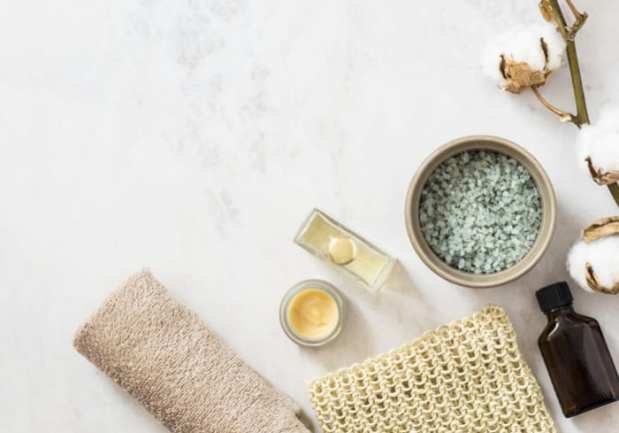Innovative Approaches To The $4.2T Health And Wellness Market

It seems every firm is trying to find a way into the expansive — and ever-growing — “health and wellness” market. As of 2018 health and wellness was a $4.2 trillion annual industry, having grown 12.8 percent between 2015 and 2017, according to the Global Wellness Institute. The industry now represents 5.3 percent of global economic output.
“As people incorporate more of the wellness values into their lifestyle, our interaction with the wellness economy is also becoming less episodic and more intentional, more integrative, and more holistic,” Global Wellness Institute Senior Research Fellow Ophelia Yeung noted of the data. “In the last few years, wellness has become a dominant lifestyle value that is profoundly changing consumer behavior and changing the markets.”
That the markets are changing is observable in what feels like an unending parade of brands looking to jump on board with the trend. There are the fitness subscriptions — digital workouts streamed directly to users, or subscriptions to local gyms — beauty treatments gone digital and the veritable ocean of skincare products that have launched for everyone and anyone over the last two years. If you have dry skin in America at this point, it is not because someone has not been trying very hard to sell you moisturizer.
But when all of the standard approaches to selling the ephemerals of health and wellness start to become saturated with offerings, how does one stand out from the crowd in a monetizable way?
Well, with innovation of course. Of all kinds …
Monetizing Mindfulness
There are many wonderful things to be said for getting a manicure. It’s relaxing and anyone’s hands will look much better for it. But generally speaking, usually it is not the sort of thing thought to make someone a deeper, more centered or more mindful person.
Unless, of course, the manicure takes place at a a “wellness-inspired” nail salon, such as Sundays in Manhattan, as discovered by New York Times style section writer Shivani Vora. Where once her weekly manicures “had always been a chore,” at Sundays she not only had her nails pampered, but also was given meditations on a headset plugged into an MP3 player, organic peppermint tea and a series of cues to breathe deeply and let the tension flow from her body.
The process worked — and the $5 add-on fee was worth finding the time to meditate that the writer said she couldn’t quite manage otherwise.
“Meditation is everywhere these days and a buzzword, and it’s now finding its way into nail services,” said Global Wellness Institute Research Director Beth McGroarty. “Salons need to make a minimal financial investment in order to offer it, and clients don’t have to take any extra time to try it.”
And while Sundays has earned the ardor of the style section, the best known player the meditative manicure game is Namaste Nail Sanctuary, which has five locations spread across the U.S. and offers meditations led by Deepak Chopra during nail treatments.
“I used to not be able to relax or sit still, but this meditation has drastically reduced my daily stress level,” Woodland Hill California resident and Namaste Nail Salon enthusiast Allison Moore told the New York Times. “Whenever I feel myself going into overdrive, I think of Deepak’s voice and immediately calm down.”
Small upcharge, no cost to the provider and customers finding inner peace — along with French tips.
But of course, manicures are not everyone’s speed — and many folks are looking for wellness solutions closer to home.
Luckily Amazon has some ideas.
Amazon’s In-and-Out of the Box Wellness Solutions
With a $4.2 trillion market out there, Amazon making a few moves on health and wellness is no surprise. Where there are customers, there is usually Amazon. But for its two big moves in the first half of 2019, one has to admire how far in the box the eCommerce giant stayed with one, and how far out it went with the other.
Amazon in March released its first-ever line of in-house skincare products under the Belei brand name. Packaged in recycled resin bottles, the collection rolled out with 12 different items ranging from vitamin C serums to retinol moisturizer.
“Our goal is to help customers spend less time and money searching for the right skincare solutions,” Amazon Head of Beauty for Private Brands Kara Trousdale said. “We took a simple, no-nonsense approach when creating Belei, developing products with ingredients that are both proven to deliver results and also offer customers great value for the quality.”
And for the consumer out there looking for more high tech — and slightly more out-of-the-box — solutions for their mental and physical well being, there’s an Alexa skill for that.
Well, not exactly, but reports surfaced a few weeks ago that Amazon is working on a voice-activated wearable capable of reading human emotions.
According to anonymous sources familiar with the matter, the hardware research and development group Lab126 and the voice software team behind Alexa are working jointly on the device. The idea, according to sources, is that the health and wellness device will come with a microphone to listen into a user’s voice and detect their emotional state.
The project is reportedly codenamed “Dylan,” with ongoing work toward a program for beta testing. It is not known whether the test encompasses software that detects emotion, the prototype hardware or both concepts.
Ensuring A Good Night Sleep (and Other “Digiceuticals”)
Americans suffering from insomnia — and developers creating app-based wellness programs — got some good news this week as CVS has created a way for consumers seeking treatment via an app to pay for it.
CVS has announced a partnership with Big Health, a San Francisco-based company that developed the Sleepio app to treat insomnia. The tie-up will add the app to the list of solutions they reimburse — as well as check patient eligibility for reimbursement using the same systems the use to process drugs prescriptions.
According to CVS Chief Medical Officer Troyen Brennan, poor-quality sleep and insomnia hits around 30 percent of American adults, and could “impact a wide variety of mental health conditions.”
The tie-in also opens the door for digital therapeutics or, “digiceuticals” which use software to prevent, manage or treat a medical ailments. Digiceuticals have had some difficulty gaining traction among U.S. patients — because there is an ongoing debate about who is going to pay for them.
Peter Hames, co-founder and chief executive of Big Health, told The Financial Times the CVS partnership “allows digital therapeutics to be reimbursed and administered at scale using the same underlying infrastructure as drugs for the first time,” and that this could “radically reduce the barriers to digital therapeutics being adopted at scale across all segments of the US healthcare market, including employers and health plans.”
Hames did not disclose the price of Sleepio, which uses cognitive behavioral therapeutic methods to help ease sleeplessness, but noted it compares favorably to the cost of not treating insomnia.
Derica Rice, president of CVS Caremark, the pharmacy benefit management business of CVS Health, noted that beyond standard medical care, the firms is increasingly considering “supplemental benefits to help improve health outcomes and reduce overall medical spend.”
Which, according to CVS, in the future could mean more digital solutions being offered, including “smoking cessation and substance abuse support, care management solutions, medication optimisation and adherence, and tools that help members navigate their benefits.”
So what is the future of wellness? Manicures that center the self, wearables that totally get you — or an app to cure a chronic condition, paid for by insurance? Maybe just more moisturizers until every company on Earth has a skincare solution of its own.
In either case, we’ll tell you all about it when it appears.
